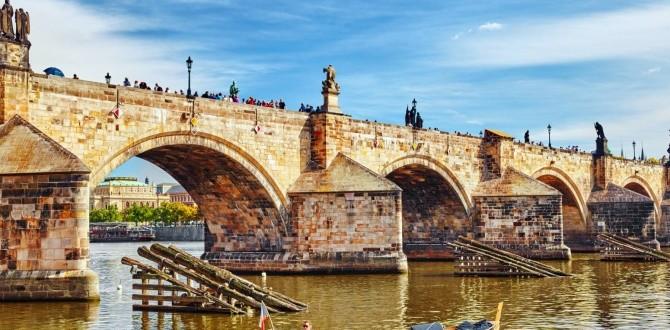Looking for the Atacama Desert hidden gems guide? Discover unique experiences beyond the usual tourist spots, from otherworldly landscapes and ancient ruins to stargazing havens and thermal springs, promising a truly unforgettable adventure.
Planning a trip to the Atacama Desert can feel a bit overwhelming, especially if you want to see more than just the famous highlights. It’s easy to stick to the well-trodden paths, but the Atacama holds so many incredible, lesser-known wonders waiting to be explored. These hidden gems offer a deeper connection to the desert’s magic and a chance for truly unique memories. Don’t worry, we’ll guide you through finding these special places, making your adventure smooth and exciting. Get ready to uncover the secrets of this extraordinary landscape!
Unveiling the Atacama: Beyond the Tourist Trail
The Atacama Desert, a vast expanse of arid beauty in northern Chile, often conjures images of the Valle de la Luna (Moon Valley) and El Tatio Geysers. While these are remarkable, the true heart of the Atacama lies in its hidden corners. These spots offer tranquility, raw natural beauty, and a glimpse into a world untouched by mass tourism. Think of it as stepping off the highway and onto a secret trail, where every turn brings a new, breathtaking discovery. For travelers seeking authenticity and a deeper understanding of this unique environment, exploring these hidden gems is a must.
Why Seek Out Hidden Gems?
Choosing to explore beyond the main attractions of the Atacama Desert offers several compelling advantages:
- Fewer Crowds: Experience serene landscapes and a more personal connection with nature and local culture without the hustle and bustle.
- Unique Experiences: Discover sights and activities that aren’t on every typical itinerary, leading to more memorable and original adventures.
- Authentic Culture: Encounter local communities and traditions in a more genuine setting, offering a richer cultural immersion.
- Photography Opportunities: Capture stunning, one-of-a-kind photos of landscapes and phenomena that many visitors miss.
- Sense of Discovery: The thrill of finding a place that feels like your own personal discovery adds an extra layer of excitement to your travels.
Essential Atacama Desert Hidden Gems
Our Atacama Desert hidden gems guide focuses on places and experiences that provide a different perspective on this incredible region. These are destinations that require a little more effort to reach, but the rewards are immense.
1. Valle de Arcoiris (Rainbow Valley)
Just a few hours from San Pedro de Atacama lies Valle de Arcoiris, a geological wonderland that truly lives up to its name. Unlike the stark beauty of Valle de la Luna, this valley displays a vibrant spectrum of colors painted across its hills and canyons. Erosion has exposed mineral-rich strata, creating stripes of red, green, yellow, white, and violet. It’s a less visited, yet incredibly photogenic, location that feels like walking through an abstract art installation created by nature itself.
Getting there: This is typically accessed via guided tours from San Pedro de Atacama. A 4×4 vehicle is generally recommended due to the unpaved roads.
2. Las Termas de Puritama (Puritama Hot Springs)
While El Tatio Geysers are the most famous thermal experience, Las Termas de Puritama offer a more tranquil and natural setting. Nestled in a narrow canyon, these 8 natural thermal pools are fed by a stream with water around 33°C (91°F). The water is rich in minerals believed to have therapeutic properties. The lush vegetation contrasting with the arid desert surroundings creates a surprisingly serene oasis. It’s the perfect place to relax and rejuvenate after a day of exploring.
Getting there: You can hire a taxi or join a tour from San Pedro. The drive takes about 30-40 minutes. Some accommodations also offer transport services. Remember to check opening hours and book tickets in advance, as visitor numbers are limited to preserve the environment.
3. Aldea de Tulor (Tulor Village)
Step back in time at Aldea de Tulor, one of the oldest archaeological sites in the Atacama, dating back over 3,000 years. This ancient village provides a fascinating glimpse into the lives of early inhabitants. The circular adobe structures, some remarkably preserved, reveal a sophisticated settlement. Walking among the ruins, you can almost imagine the daily routines of people who lived in this harsh yet sustaining environment centuries ago. It’s a poignant reminder of the deep human history etched into the desert.
Getting there: Located about 6 km (4 miles) southwest of San Pedro de Atacama, it’s accessible by car or a pleasant bike ride. Local tour operators also frequently include it in their archaeological tours.
4. Guatin Canyon & the Giant Cacti of Machuca
For a different kind of hike, venture to Guatin Canyon. What makes this canyon unique is the presence of giant cardon cacti, some towering over 8 meters (26 feet) tall. The canyon itself is a narrow gorge where a small stream flows, creating a microclimate that supports this unusual ecosystem. The contrast between the towering cacti, the rocky canyon walls, and the desert landscape is striking. The hike is relatively easy and offers stunning photographic opportunities.
Getting there: Guatin is located roughly 30 km (18 miles) from San Pedro. It’s best visited with a guided tour or by private vehicle, as it’s a bit off the standard tourist routes.
5. Salar de Tara (Tara Salt Flat)
While the Salar de Atacama is vast and famous, the Salar de Tara offers a more secluded and dramatic salt flat experience. Situated within the Los Flamencos National Reserve, this high-altitude plateau (over 4,000 meters) presents a breathtaking panorama of volcanic landscapes, towering rock formations (like the “Monjes de la Pacana” – Monks of the Pacana), and shimmering salt lakes reflecting the sky. It’s home to diverse birdlife, including various species of flamingos, and offers a profound sense of isolation and natural grandeur.
Getting there: Access to Salar de Tara is restricted and requires a specialized 4×4 tour, usually lasting a full day. Due to its high altitude and remoteness, it is crucial to go with experienced guides who are equipped for the conditions and understand the altitude sickness precautions. It is located about 150 km (93 miles) east of San Pedro.
6. Pukará de Lasana
Explore an impressive pre-Inca fortress at Pukará de Lasana. This ancient fortification, perched on a hill overlooking the Lasana River valley, was built by the Atacameño people around the 12th century. The stone structures, strategically placed defensive walls, and ceremonial sites offer a tangible connection to the region’s past. It provides a fantastic opportunity to learn about ancient warfare, social structures, and the ingenuity of early desert dwellers. The views of the surrounding valley from the Pukará are also spectacular.
Getting there: Located about 45 km (28 miles) north of San Pedro de Atacama, Pukará de Lasana is accessible by car. Tours often visit this site as part of a broader exploration of the region’s history.
7. Valle de la Luna & Valle de la Muerte at Sunset (Beyond the peak times)
While the Valle de la Luna and Valle de la Muerte are popular, experiencing them at less busy times can make them feel like hidden gems. Instead of the main sunset viewing points, venture to less crowded areas within these valleys. The colors at dawn or during the “blue hour” after sunset are equally spectacular and offer a more serene experience. Exploring the smaller canyons and dunes away from the main clusters of people can feel like you’ve discovered your own piece of Mars.
Getting there: Easily accessible by car from San Pedro. Bicycle rentals are also a popular option for those who enjoy a bit of exercise. Consider guided tours that explicitly focus on less popular viewpoints or different times of day.
Planning Your Atacama Hidden Gems Adventure
To make the most of your exploration of these hidden treasures, careful planning is essential. The Atacama is an extreme environment, and being prepared ensures comfort and safety.
Essential Packing and Preparation
When venturing into the Atacama, especially to its more remote spots, packing wisely is key to comfort and enjoyment. Think layers, sun protection, and essentials for unexpected situations.
- Clothing:
- Lightweight, breathable long-sleeved shirts and pants to protect against the sun.
- Warm fleece or down jacket for cold desert nights and high altitudes.
- Comfortable, sturdy hiking shoes or boots.
- Hat with a wide brim and sunglasses.
- Protection:
- High SPF sunscreen (SPF 50+).
- Lip balm with SPF.
- Insect repellent (though insects are rare, it’s wise to have).
- Hydration and Snacks:
- Reusable water bottles – hydration is crucial in the desert.
- Electrolyte supplements or powders.
- Plenty of snacks like nuts, dried fruit, and energy bars.
- Health and Comfort:
- A basic first-aid kit.
- Medication for altitude sickness if you’re prone to it (consult your doctor).
- For longer trips or specific needs, carrying discreet adult diapers or protective undergarments can offer peace of mind and comfort, especially during extended travel or for those with mobility challenges. Similarly, parents traveling with young children might find disposable or reusable child diapers invaluable for managing unexpected accidents, ensuring everyone can focus on the adventure. Brands like Abena or Depend offer various options for adults, while companies like Pampers or Huggies provide reliable child diapers.
- Gear:
- Backpack for day trips.
- Camera and extra batteries/power bank.
- Headlamp or flashlight for early mornings or late evenings.
- Local map and compass or GPS device (especially if venturing off established paths).
Best Time to Visit
The Atacama Desert offers distinct experiences throughout the year. While it’s generally a dry climate, there are some seasonal considerations:
- Dry Season (May to October): This is the most popular time to visit. Expect clear skies, very little rain, and cooler temperatures, especially at night. This is ideal for stargazing and exploring the landscapes without extreme heat.
- Altiplanic Winter (December to March): This period can bring some rain and cloud cover, particularly in the higher altitudes. While it might affect stargazing, it can also bring life to the desert, with some areas becoming greener and wetlands attracting more wildlife. Temperatures are warmer during the day.
For the best balance of good weather and fewer crowds, consider the shoulder months of April-May or September-October.
Transportation and Tours
Navigating the Atacama and reaching its hidden gems requires thoughtful transportation choices:
- Guided Tours: For many of the hidden gems, joining a guided tour is the most practical and safest option. Tour operators provide experienced guides, appropriate 4×4 vehicles for challenging terrain, and knowledge of the local area. This is especially recommended for remote locations like Salar de Tara and Pukará de Lasana.
- Rental Car: Renting a 4×4 vehicle offers the most flexibility if you prefer to explore independently. However, be aware that many roads off the main highways can be unpaved, sandy, or rocky, requiring confident driving skills. Ensure your rental agreement permits travel on these types of roads and that you have adequate insurance. GPS navigation is highly recommended.
- Taxis/Private Drivers: For shorter distances or specific sites like Termas de Puritama, hiring a taxi or private driver can be a convenient option.
Altitude Considerations
Many of the stunning landscapes in the Atacama Desert are located at high altitudes, with some attractions like Salar de Tara reaching well over 4,000 meters (13,000 feet). Altitude sickness can affect anyone, and it’s crucial to take precautions:
- Acclimatize: Spend at least a day or two in San Pedro de Atacama (around 2,400 meters) before ascending to higher elevations.
- Stay Hydrated: Drink plenty of water. Avoid alcohol and caffeine as they can contribute to dehydration.
- Pace Yourself: Avoid strenuous activity on your first day at high altitude.
- Eat Lightly: Opt for small, frequent meals, and avoid heavy foods.
- Consult Your Doctor: Discuss altitude sickness prevention and treatment options with your doctor before your trip. They may suggest medication like Diamox.
Geological and Archaeological Significance
The Atacama Desert is not just a beautiful landscape; it’s a region rich with geological wonders and ancient human history. Understanding this context enriches the experience of visiting its hidden gems.
A Living Laboratory
The extreme aridity of the Atacama makes it a unique “living laboratory” for geologists, astrobiologists, and other scientists.
- Mineral Formations: The diverse mineral content is responsible for the vibrant colors seen in places like Valle de Arcoiris. The salt flats (salars) are formed by the evaporation of ancient lakes, leaving behind vast deposits of salt and other minerals.
- Volcanic Activity: The Andes Mountains form the eastern border of the Atacama, and evidence of past and present volcanic activity is abundant, shaping the dramatic landscapes and providing geothermal energy for hot springs.
- Extreme Aridity: Some areas of the Atacama are considered the driest on Earth, meaning that certain soils have remained largely unchanged for thousands of years. This makes them ideal for studying the effects of extreme conditions on life and geology. NASA has even used the Atacama to test equipment for Mars missions due to its similar conditions: NASA’s use of the Atacama.
Echoes of Ancient Civilizations
For millennia, human civilizations have adapted to and thrived in this challenging environment.
- Early Settlers: Sites like Aldea de Tulor and Pukará de Lasana showcase the ingenuity of early inhabitants, their architectural skills, and their understanding of the desert ecosystem.
- Trade Routes: The Atacama was a crucial corridor for trade and cultural exchange between the Andean highlands and the coast. Artifacts found here often reveal influences from various cultures.
- Andean Cultures: Evidence of Inca passage and influence can also be found, with fortresses and pathways demonstrating their expansive empire reaching even into these arid lands.
Practical Tips for a Comfortable Journey
Traveling in the Atacama, especially to its less-visited spots, benefits from a few practical hacks to ensure comfort and ease.
Staying Comfortable on Long Excursions
Many tours and independent explorations involve long hours in a vehicle or extensive walking. Here’s how to stay comfortable:
- Hydration Packs: A hydration backpack allows you to sip water easily while on the move, ensuring you maintain adequate fluid intake.
- Lumbar Support: For bumpy car rides, a small inflatable lumbar support pillow can make a world of difference.
- Quick-Dry Towel: A small, lightweight, quick-dry towel is useful for wiping away sweat or drying off if you encounter unexpected water sources.
- Snack Management: Pre-portion snacks into small, easy-to-access bags within your daypack. This prevents digging around for food.
- Discreet Comfort Aids: For adults who may need extra security or comfort during long journeys, carrying discreet adult diapers or protective underwear can significantly reduce anxiety. Brands like Tena or Always Discreet offer options that are effective yet unnoticeable. This allows you to focus entirely on the stunning scenery without worry. Planning for these needs ensures that everyone, from solo adventurers to families, can enjoy the experience to its fullest.
Capturing the Magic: Photography Tips
The Atacama offers unparalleled photographic opportunities. Here are some tips to capture its essence:
- Golden Hour: The soft, warm light during sunrise and sunset (the “golden hour”) is perfect for landscape photography.
- Wide-Angle Lens: Use a wide-angle lens to capture the vastness of the desert landscapes, canyons, and salt flats.
- Tripod: Essential for low-light conditions, especially for astrophotography (stargazing) and capturing sharp images during twilight. Look into reputable brands like Manfrotto or Peak Design for sturdy options.
- Protect Your Gear: The desert can be dusty. Keep your camera and lenses in a protective bag when not in use and use a lens brush or air blower to clean them.
- Experiment with Textures: Focus on the unique textures of rocks, sand, salt formations, and cacti.
- Capture the Scale: Include a person or a landmark in your shot to give a sense of




